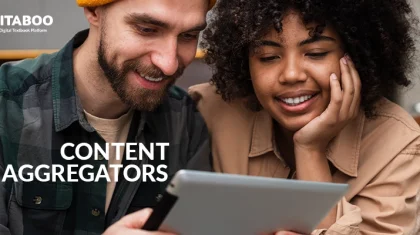
How Can Digital Publishers Support Independent Learning?
Summarize this blog with your favorite AI:
Traditional education practices have come a long way driven by the Internet and digital media. Students are no longer restricted to the classroom and school/public libraries for information. Empowered by smartphones and the Internet, they have access to all the information they need right at their fingertips.
Also Read: How to Select the Best Digital Publishing Platform
Digital technologies have impacted all aspects of our lives and the education sector is not left untouched. Moving with the times, we now have digital publishers, who along with their traditional print books, have embraced the online media to expand their markets and reach a wider audience.
Related Read: The Role of Technology in Digital Publishing
In fact, they are now playing a critical role in online education, designing and digitizing their content for consumption on learning management systems and other edtech platforms. The pandemic has only served to accelerate this change, providing digital publishers the opportunity to design their educational content guided by modern pedagogical practices, which puts the learner in the center of the learning experience.
The Internet offers a complete range of information on any subject, on any topic. However, it is difficult for the students to dive into this sea and find the nuggets they want. It is here that the role of the digital publishers comes in. They can use the various digital resources at hand to package the information in a way that enables students to engage with it, allowing them to personalize their learning journeys.
In this article, we look at how digital publishers can support independent learning in students.
Microlearning: We are living in times of information overload. Successful digital publishers understand only too well how important it is for them to instantly capture students’ attention and ensure that they engage with their content. Microlearning, or learning encompassed in small nuggets, is a means for digital publishers to grab students’ attention, immerse them into the content and promote independent learning. Each microlearning nugget is around 4 to 5 minutes long and encapsulates concise information on a subject. Each nugget is complete in itself – it delves right in without meandering from the subject under discussion.
Video content: Digital publishers can also package their educational content in the form of videos using multimedia-rich 2D and 3D content, encouraging them to revisit them till they gain mastery over the subject. Video content is a great way to promote independent learning. Besides, it also offers immense flexibility, allowing students to view the videos at a time and place of their convenience and also repeat the modules as many times as desired.
Home assignment portals: Some digital publishers also provide home assignment portals to support independent learning in students. This enables educators to easily assign and evaluate home assignments, and students can gain access to a library of resources to complete their tasks. Apart from promoting independent learning, initiatives such as this, also build in them independent thinking, research and analytical skills that will hold them in good stead once they embark on their professional careers.
Gamification: Gamification is a fun and entertaining way to promote independent learning in students. In gamification, the content is packaged in the form of a game, complete with badges, leaderboards, and rewards and recognition. Each game comprises a series of levels, with each level fulfilling a learning goal. On successfully completing a level, the student can move on to the next one till the end of the course module.
There are several benefits of gamifying educational content. For one, today’s generation is hooked to online games and gamification leverages this interest to support independent learning. Students can proceed through the game at their own pace, make mistakes and course correct and find the right answers. The game challenges the learners to put their knowledge to test and move up the levels. This form of learning by doing, apart from providing fun and entertainment, also ensures long-term learning.
Virtual reality and artificial reality: Digital publishers can also leverage technology such as VR to provide virtual tours to places while designing geography lessons. Similarly, they can create AR apps that students can download on their smartphones. With an AR-enabled app, publishers can help make the lesson come alive with 3D models or links to pages with more information.
In fact, AR and VR is a great way to bring alive abstract concepts in Mathematics and Science, which students generally find difficult to understand. Besides, students can also conduct activities such as chemistry experiments in virtual environments without any fear of accidents or damage.
In conclusion
Digital technologies have greatly impacted education, providing digital publishers a means to move away from the traditional text book and repackage their content for the online media. They can design their content in the form of audio and video files, use gamification and AR/VR tools to bring lessons alive and challenge the students to undertake learning independently. While teachers continue to play a crucial role in their education, students are now better equipped to take control over their learnings and trace their own unique learning paths.
Contact our expert team now and get started!
To know more, please write to us at contact@kitaboo.com
Discover how a mobile-first training platform can help your organization.
KITABOO is a cloud-based platform to create, deliver & track mobile-first interactive training content.



